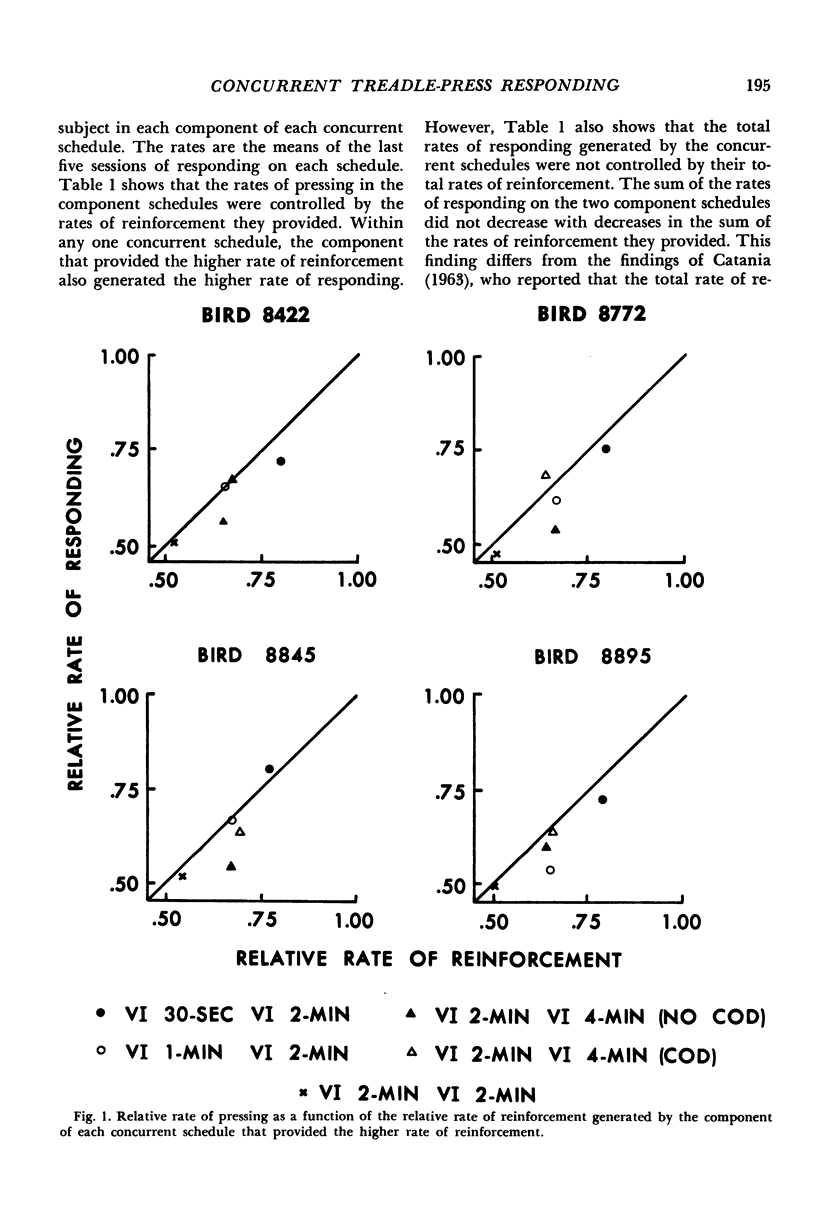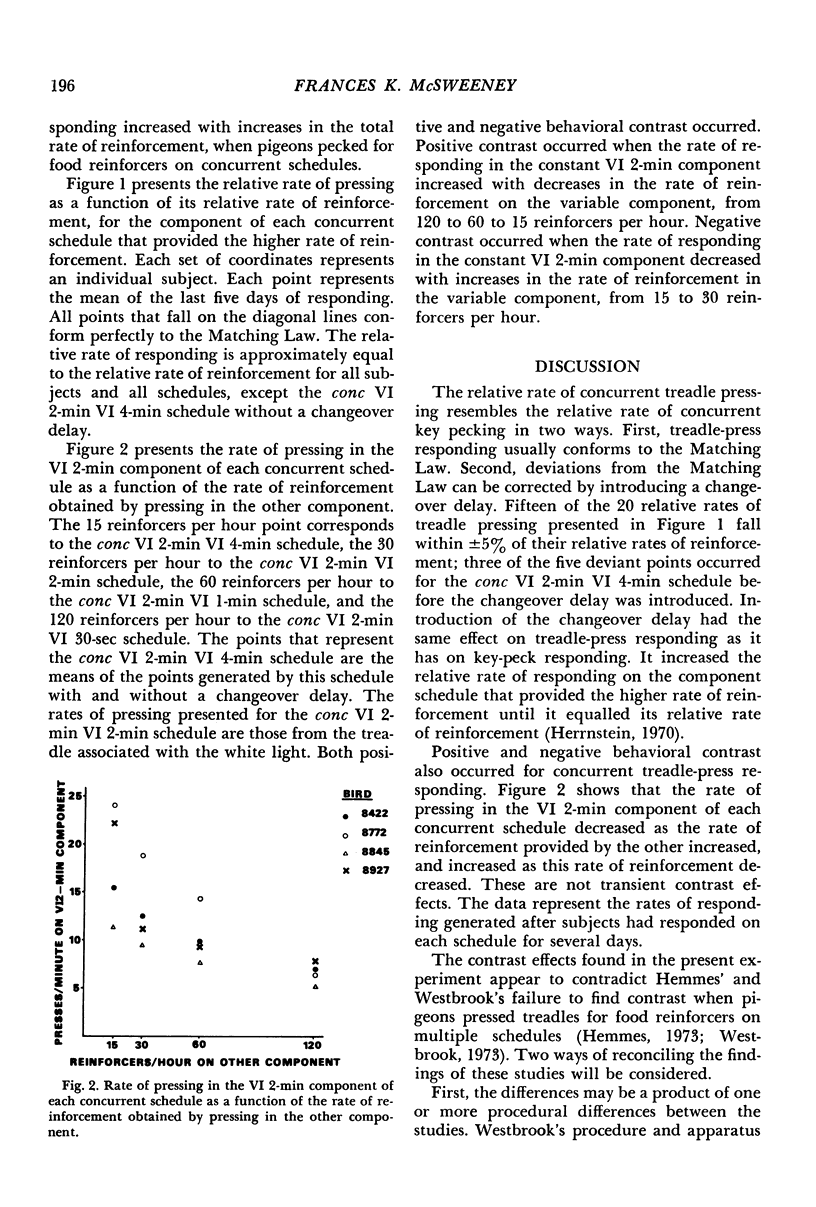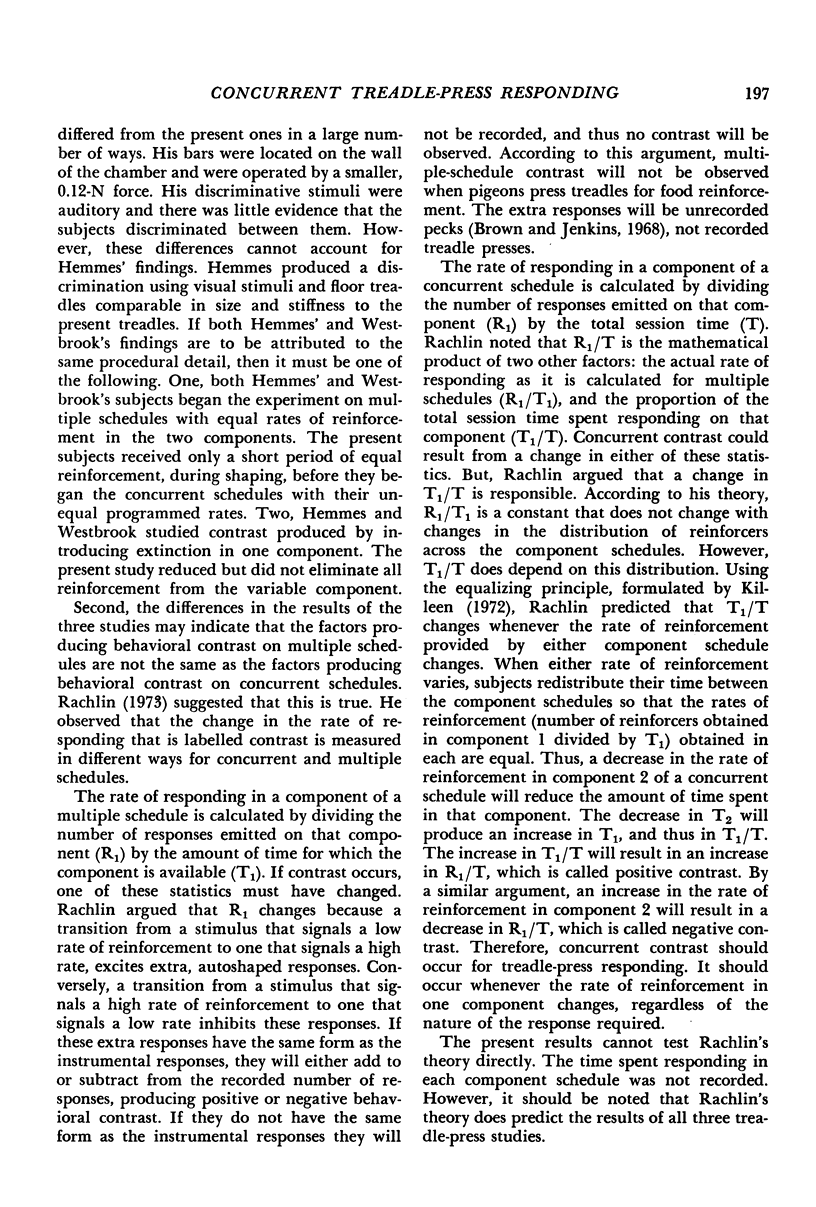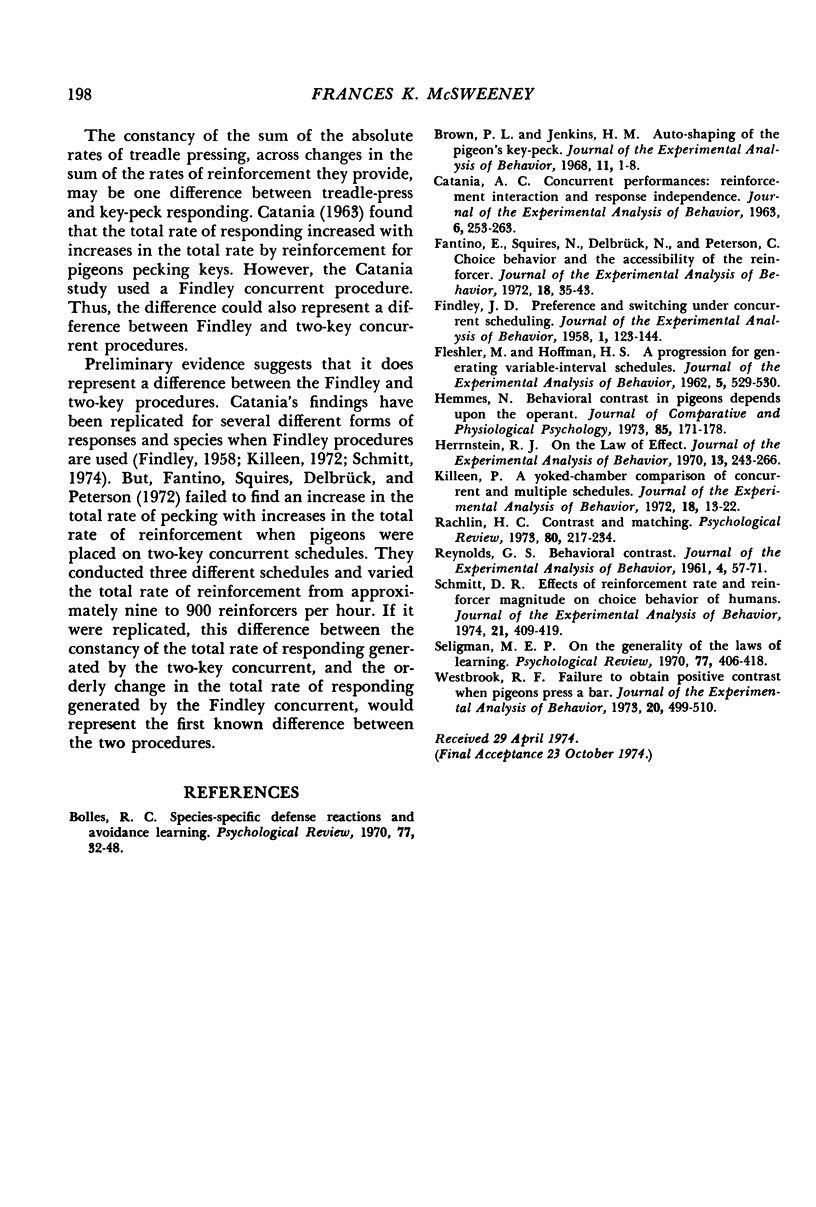Abstract
Four White King pigeons pressed treadles for food reinforcement on several concurrent variable-interval variable-interval schedules. The rate of reinforcement available for responding in one of the two component schedules was held constant at 30 reinforcers per hour. The rate of reinforcement available for responding in the other was varied from 120 to 60 to 15, and then to 30 reinforcers per hour. The relative rate of responding in each component schedule equalled the relative rate of reinforcement that the component provided. And, behavioral contrast, defined as an inverse relationship between the rate of responding in the constant component and the rate of reinforcement obtained by responding in the other component, occurred for all schedules.
Full text
PDF





Selected References
These references are in PubMed. This may not be the complete list of references from this article.
- Brown P. L., Jenkins H. M. Auto-shaping of the pigeon's key-peck. J Exp Anal Behav. 1968 Jan;11(1):1–8. doi: 10.1901/jeab.1968.11-1. [DOI] [PMC free article] [PubMed] [Google Scholar]
- CATANIA A. C. Concurrent performances: reinforcement interaction and response independence. J Exp Anal Behav. 1963 Apr;6:253–263. doi: 10.1901/jeab.1963.6-253. [DOI] [PMC free article] [PubMed] [Google Scholar]
- FLESHLER M., HOFFMAN H. S. A progression for generating variable-interval schedules. J Exp Anal Behav. 1962 Oct;5:529–530. doi: 10.1901/jeab.1962.5-529. [DOI] [PMC free article] [PubMed] [Google Scholar]
- Fantino E., Squires N., Delbrück N., Peterson C. Choice behavior and the accessibility of the reinforcer. J Exp Anal Behav. 1972 Jul;18(1):35–43. doi: 10.1901/jeab.1972.18-35. [DOI] [PMC free article] [PubMed] [Google Scholar]
- Findley J. D. Preference and Switching under Concurrent Scheduling. J Exp Anal Behav. 1958 Apr;1(2):123–144. doi: 10.1901/jeab.1958.1-123. [DOI] [PMC free article] [PubMed] [Google Scholar]
- Hemmes N. S. Behavioral contrast in pigeons depends upon the operant. J Comp Physiol Psychol. 1973 Oct;85(1):171–178. doi: 10.1037/h0034883. [DOI] [PubMed] [Google Scholar]
- Herrnstein R. J. On the law of effect. J Exp Anal Behav. 1970 Mar;13(2):243–266. doi: 10.1901/jeab.1970.13-243. [DOI] [PMC free article] [PubMed] [Google Scholar]
- Killeen P. A yoked-chamber comparison of concurrent and multiple schedules. J Exp Anal Behav. 1972 Jul;18(1):13–22. doi: 10.1901/jeab.1972.18-13. [DOI] [PMC free article] [PubMed] [Google Scholar]
- REYNOLDS G. S. Behavioral contrast. J Exp Anal Behav. 1961 Jan;4:57–71. doi: 10.1901/jeab.1961.4-57. [DOI] [PMC free article] [PubMed] [Google Scholar]
- Schmitt D. R. Effects of reinforcement rate and reinforcer magnitude on choice behavior of humans. J Exp Anal Behav. 1974 May;21(3):409–419. doi: 10.1901/jeab.1974.21-409. [DOI] [PMC free article] [PubMed] [Google Scholar]
- Westbrook R. F. Failure to obtain positive contrast when pigeons press a bar. J Exp Anal Behav. 1973 Nov;20(3):499–510. doi: 10.1901/jeab.1973.20-499. [DOI] [PMC free article] [PubMed] [Google Scholar]


